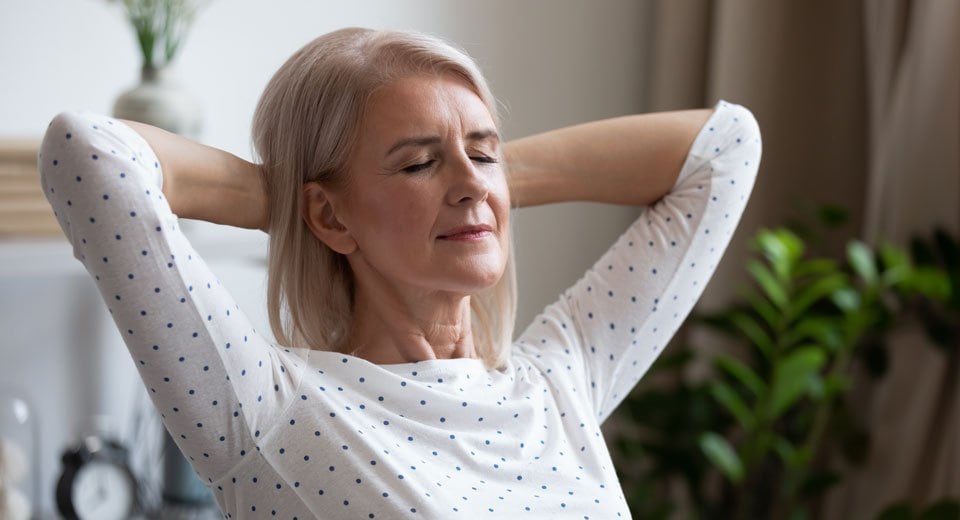Simple exercises to help strengthen your lungs

CNN anchor Chris Cuomo has been chronicling his own case of COVID-19 via cable news and YouTube, and dispensing some medical advice he has received from doctors.
In his April 6 update, he told viewers that “the secret” to kicking the virus was “not a potion or a pill; it’s about your will and devotion.” He then shared advice from a doctor he described as a pulmonary expert. The doctor, Cuomo said, suggested that instead of collapsing into bed, Cuomo should push himself to stretch, keep moving and take deep breaths to protect his lungs.
While none of us should be taking medical advice from a TV newscaster, some doctors are using variations of the strategies Cuomo describes to fight the virus’s debilitating effects on the lungs, according to a report in The New York Times.
COVID-19 infects the lungs and their air passages, or bronchi, said Albert Barrows, MD, medical director of Cape Cod Healthcare’s Pulmonary Rehabilitation Program. That can lead to pneumonia, which causes areas of the lungs to fill with inflammatory cells, fluid and mucus. This process causes shortness of breath and can progress to serious consequences, such as the need for a mechanical ventilator, he said.
Early in the pandemic, doctors moved quickly to put hospitalized patients struggling to breathe in a medically induced coma and then on a ventilator, according to the Times report. But recently, some doctors are trying to postpone intubation by giving patients supplemental oxygen and encouraging them to roll off their backs, sit in reclining chairs and take deep breaths. The goal is for patients to breathe on their own as long as possible and increase the oxygen saturation in their bodies.
Cape Cod Hospital and Falmouth Hospital physicians are using these techniques with COVID-19 patients, according to Arthur Boujoukos, MD, director of the Cape Cod Hospital Intensive Care Unit.
COVID-19 patients at home also can take steps to support and protect their lungs, Dr. Barrows said.
“I believe there are three concepts that COVID patients can address to help themselves as their illness progresses: deep breathing, secretion management and control of anxiety,” he said.
Here’s what Dr. Barrows suggests for patients at home:
- Breathe deeply. Breathing exercises can help fully expand the lungs and promote better lung function and, possibly, prevent progression of the disease, he said. To begin, sit upright in a chair, take as deep a breath as possible through the nose, hold it for five seconds, then exhale slowly through pursed lips. Do these five to 10 times several times a day. Remaining as active as possible at home instead of staying in bed will help promote good lung expansion, he said.
- Manage mucus. Try to maintain good airway hygiene by expectorating mucus. Take a deep breath and then forcefully cough. In addition to coughing, the best expectorant is to drink plenty of fluids, Dr. Barrows said.
- Control your anxiety. “Shortness of breath is a very anxiety-provoking sensation,” he said. But the rapid breathing caused by COVID-19 can actually worsen lung function because air doesn’t get deep into the lungs where oxygen and carbon dioxide are processed. Try relaxation breathing techniques like those taught in yoga, he said. Here’s one version, courtesy of the U.S. Veterans Affairs Administration.
- Place one hand on your stomach and one hand on your chest.
- Breathe in slowly through your nose.
- Feel your stomach expand as you inhale.
- Focus on filling up your lower lungs with air.
- Slowly exhale, releasing all the air out through your mouth.
- Use your hand to feel your stomach fall as you exhale.
- Practice breathing four to six breaths per minute (about one full inhale and exhale per 10-15 seconds).
Meanwhile, if we are healthy, there is something important we can do to help fight COVID19: regular aerobic exercise.
“This allows the diaphragm and accessory breathing muscles to become more effective,” Dr. Barrows said. Patients in the pulmonary rehabilitation program start slowly, building up their lungs over weeks, months or years, he said, so be careful you don’t take things too fast. Check with your doctor to see what an appropriate aerobic exercise for you might be.
